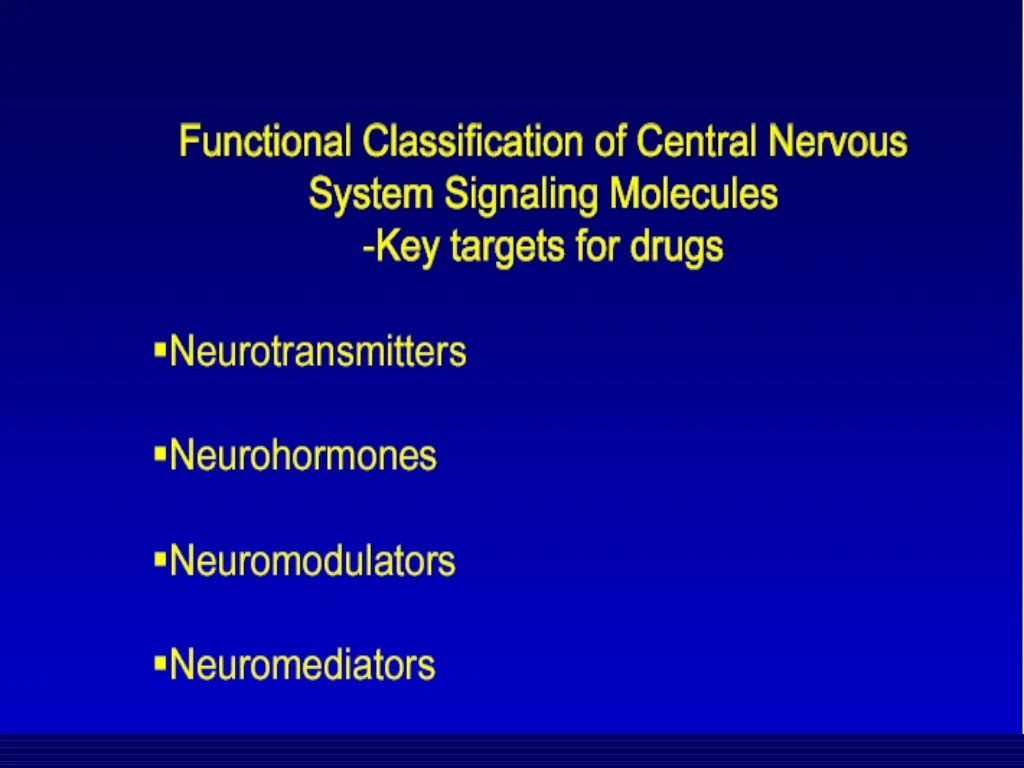Pharmacology made easy neurological system part 1 – Pharmacology Made Easy: Neurological System Part 1 provides an accessible and comprehensive overview of the fundamentals of neuropharmacology. This guide will delve into the intricate workings of the nervous system and explore the role of neurotransmitters in brain function.
We will examine the anatomy and physiology of the central and autonomic nervous systems, unraveling the complex interplay between neurotransmitters and their receptors. From the major neurotransmitter systems to the pharmacological agents used to modulate their activity, this guide will provide a solid foundation for understanding the pharmacological basis of neurological disorders and their treatments.
1. Introduction to Neuropharmacology
Neuropharmacology is the study of the effects of drugs on the nervous system. It is a branch of pharmacology that focuses on the interactions between drugs and the central and peripheral nervous systems. Neuropharmacology is essential for understanding how drugs work and how they can be used to treat neurological and psychiatric disorders.
Basic Principles of Neurotransmission
Neurotransmission is the process by which nerve cells communicate with each other. It involves the release of neurotransmitters, which are chemical messengers that bind to receptors on target cells. Neurotransmitters can be excitatory, which means they increase the activity of the target cell, or inhibitory, which means they decrease the activity of the target cell.
Role of Neurotransmitters in Brain Function
Neurotransmitters play a vital role in brain function. They are involved in a wide range of processes, including learning, memory, mood, and movement. Dysregulation of neurotransmitter systems can lead to a variety of neurological and psychiatric disorders.
2. Central Nervous System (CNS) Pharmacology
Anatomy and Physiology of the CNS
The CNS is composed of the brain and spinal cord. The brain is the control center of the body, and it is responsible for a wide range of functions, including thought, emotion, and movement. The spinal cord is a long, thin bundle of nerves that runs from the brain down the back.
It carries messages between the brain and the rest of the body.
Blood-Brain Barrier
The blood-brain barrier is a protective layer of cells that surrounds the CNS. It helps to regulate the passage of substances from the blood into the CNS. The blood-brain barrier is important for protecting the CNS from harmful substances, but it can also make it difficult to deliver drugs to the CNS.
Major Neurotransmitter Systems in the CNS, Pharmacology made easy neurological system part 1
There are a number of major neurotransmitter systems in the CNS, including the cholinergic, adrenergic, and serotonergic systems.
- The cholinergic system is involved in a variety of functions, including learning, memory, and movement.
- The adrenergic system is involved in arousal, attention, and mood.
- The serotonergic system is involved in mood, sleep, and appetite.
3. Autonomic Nervous System (ANS) Pharmacology

Anatomy and Physiology of the ANS
The ANS is a division of the nervous system that controls involuntary functions, such as heart rate, blood pressure, and digestion. The ANS is divided into two branches, the sympathetic and parasympathetic divisions.
- The sympathetic division is responsible for the “fight-or-flight” response.
- The parasympathetic division is responsible for the “rest-and-digest” response.
Role of Neurotransmitters in ANS Function
Neurotransmitters play a vital role in ANS function. The main neurotransmitters in the ANS are acetylcholine and norepinephrine.
- Acetylcholine is the primary neurotransmitter of the parasympathetic division.
- Norepinephrine is the primary neurotransmitter of the sympathetic division.
Pharmacological Agents Used to Modulate ANS Activity
There are a number of pharmacological agents that can be used to modulate ANS activity. These agents include anticholinergics, which block the effects of acetylcholine, and adrenergic agonists, which stimulate the effects of norepinephrine.
4. Neurodegenerative Disorders

Major Neurodegenerative Disorders
Neurodegenerative disorders are a group of diseases that are characterized by the progressive loss of nerve cells. The most common neurodegenerative disorders are Alzheimer’s disease, Parkinson’s disease, and multiple sclerosis.
Role of Neuropharmacology in the Treatment of Neurodegenerative Disorders
Neuropharmacology plays an important role in the treatment of neurodegenerative disorders. There are a number of drugs that can be used to slow the progression of these diseases and improve symptoms.
- Cholinesterase inhibitors are used to treat Alzheimer’s disease.
- Dopamine agonists are used to treat Parkinson’s disease.
5. Neuropsychiatric Disorders
Major Neuropsychiatric Disorders
Neuropsychiatric disorders are a group of mental illnesses that are caused by disruptions in brain function. The most common neuropsychiatric disorders are depression, anxiety, and schizophrenia.
Role of Neuropharmacology in the Treatment of Neuropsychiatric Disorders
Neuropharmacology plays an important role in the treatment of neuropsychiatric disorders. There are a number of drugs that can be used to treat these disorders and improve symptoms.
- Antidepressants are used to treat depression.
- Antipsychotics are used to treat schizophrenia.
- Mood stabilizers are used to treat bipolar disorder.
6. Drug Abuse and Addiction

Neuropharmacology of Drug Abuse and Addiction
Drug abuse and addiction are serious problems that can have devastating consequences. Neuropharmacology plays an important role in understanding the neurobiology of drug abuse and addiction.
Drugs of abuse affect the brain by altering the levels of neurotransmitters. This can lead to changes in mood, behavior, and cognition. Over time, drug abuse can lead to addiction, which is a chronic, relapsing disease.
Role of Neuropharmacology in the Treatment of Drug Abuse and Addiction
Neuropharmacology plays an important role in the treatment of drug abuse and addiction. There are a number of drugs that can be used to treat addiction and help people recover.
- Methadone and buprenorphine are used to treat opioid addiction.
- Naltrexone is used to treat alcohol addiction.
Clarifying Questions: Pharmacology Made Easy Neurological System Part 1
What is neuropharmacology?
Neuropharmacology is the study of the effects of drugs on the nervous system.
What are neurotransmitters?
Neurotransmitters are chemical messengers that transmit signals between neurons.
What is the blood-brain barrier?
The blood-brain barrier is a protective barrier that regulates the entry of substances from the blood into the brain.
What are the major neurodegenerative disorders?
The major neurodegenerative disorders include Alzheimer’s disease, Parkinson’s disease, and multiple sclerosis.
What is the role of neuropharmacology in treating neurological disorders?
Neuropharmacology plays a crucial role in developing and optimizing pharmacological treatments for neurological disorders, such as Alzheimer’s disease and Parkinson’s disease.